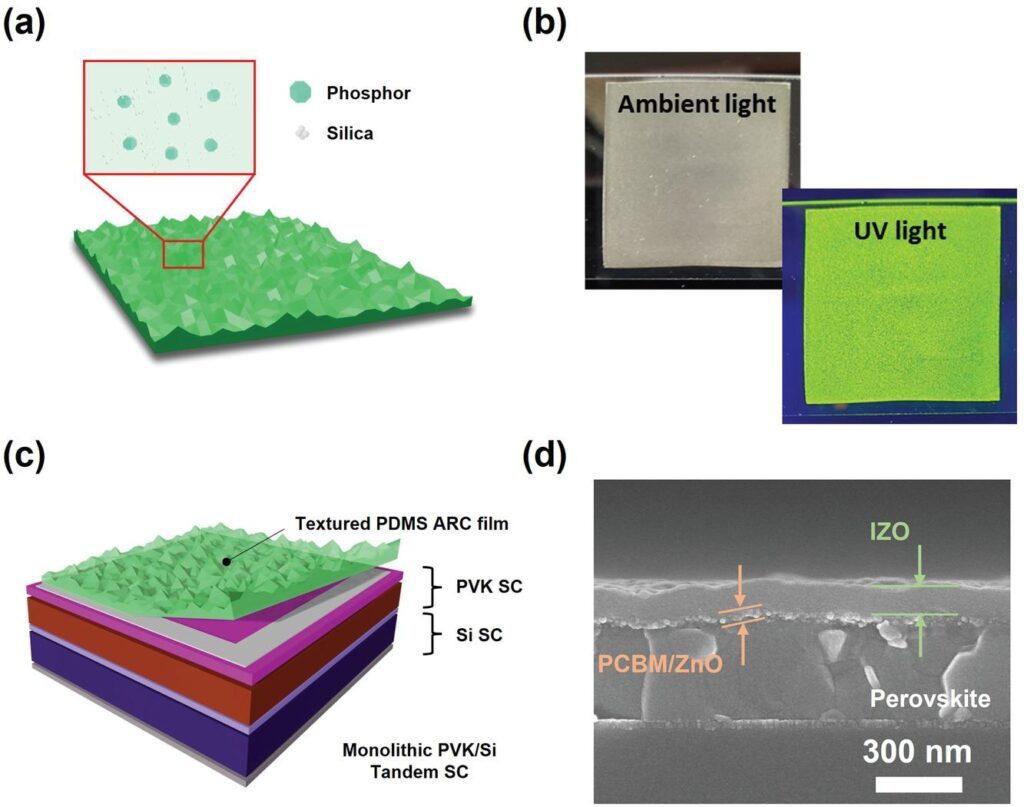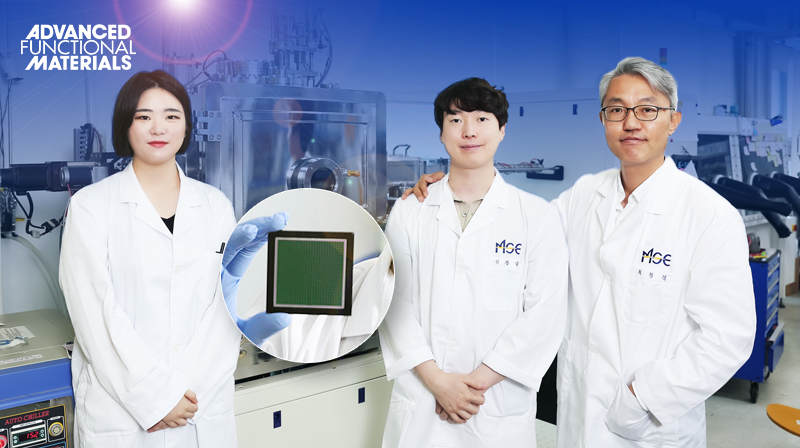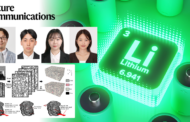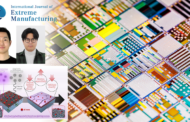A research team, affiliated with UNIST has succeeded in achieving a power conversion efficiency (PEC) of 23.50% in a perovskite-silicon tandem solar cell built with a special textured anti-reflective coating (ARC) polymeric film. According to the research team, the PCE of the device with the ARC film was sustained for 120 hours, maintaining 91% of its initial value.
This breakthrough has been led by Professor Kyoung Jin Choi and his research team in the Department of Materials Science and Engineering at UNIST, in collaboration with Professor Jung-Kun Lee and his research team from the University of Pittsburgh in the United States.

Figure 1. (a) A schematic of the PDMS layer containing SGA phosphors and SiO2 nanoparticles, (b) photographs of the PDMS layer with SGA phosphors and SiO2 nanoparticles under ambient light and UV light (λ = 365 nm), (c) a schematic of perovskite/Si tandem solar cell with the PDMS layer containing SGA phosphors and SiO2 nanoparticles, and (d) a cross-sectional SEM image of the perovskite–Si solar cell.
In the work, the research team systematically demonstrated that a combination of silicon dioxide (SiO2) nanoparticles and large phosphor particles can convert ultraviolet (UV) to visible light and increase total transmittance of ARC film. Their experimental and computational results also show that SiO2 nanoparticles in the ARC film decrease the reflectance by increasing the diffuse transmittance.
Moreover, the PCE of the device with the ARC film was sustained for 120 hours, maintaining 91% of its initial value, while the PCE of existing devices dropped to 90% of its initial efficiency after 5 hours, and then decreased to 50% after 20 hours. In addition, the initial efficiency of the solar cell has also increased by nearly 4.5% compared to the previous one.
“This optically engineered ARC film successfully promotes the light absorption of the perovskite/silicon tandem solar cell, leading to the improvement of power conversion efficiency of the tandem cell from 22.48% to 23.50%,” noted the research team.
The findings of this research were made available in the online edition of Advanced Functional Materials, ahead of its publication in August 2022. This study has been jointly participated by Seongha Lee (Department of Mechanical Engineering and Material Science, University of Pittsburgh) and Chan Ul Kim (Department of Materials Science and Engineering, UNIST).
Journal Reference
Seongha Lee,Chan Ul Kim,Sumin Bae, et al., “Improving Light Absorption in a Perovskite/Si Tandem Solar Cell via Light Scattering and UV-Down Shifting by a Mixture of SiO2 Nanoparticles and Phosphors,” Adv. Funct. Mater., (2022).













![[UNISTar Success Stories] UNIST Alumni Leads Development of Solar Hydrogen Panels at NREL](https://news.unist.ac.kr/wp-content/uploads/2025/10/Main-DR-Dharmesh-Hansora-800x448-107x60.jpg)
